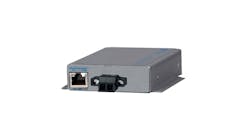It’s logical to believe that knowledge increases certainty, right? Nice try. Likewise, documenting and retaining details, fitting them into larger contexts, and developing critical thinking skills to make them all work together should be the most useful of all. And it is, but only briefly. The problem is that gaining know-how about one area or activity typically opens up much larger and deeper vistas that are pretty much if not completely unknown. Illuminating one corner may reveal the rest of a room, and may even hint at the larger house and neighborhood beyond.
For instance, I used to wonder how could a thin, little river cut a big canyon? I’ve also been fascinated by oxbows, which even the smallest streams create when their flows erode and wind back far enough to cut through their previous path. More recently, on a late-afternoon flight over the western U.S., I saw the rivers with their obvious, reflective courses, but I also noticed their nearby banks contained dozens if not hundreds of old oxbows—like handfuls of cooked spaghetti coiling along either side of the present stream. This is how wider valleys are created, of course, but I couldn’t see it until I gained the right perspective. I didn’t have a super, slow-motion video of the rivers in action, but when the light was right, the topographical contrast was high enough to provide a clear fingerprint of the geology that’s actually going on.
Similarly, one illness may get cured, but it often points out half a dozen other ailments lurking off to the side that we were blissfully unaware of before confronting the first one. For example, the new American Experience documentary, “The Cancer Detectives”, showed how early researchers improved staining of the cells on their slides, so physiological differences in their samples—and possible disease indications—would be possible to observe.
The reason I’m focusing on geology and early oncology is I believe their best practices are equally applicable to fieldbuses, Ethernet and industrial networking. As usual, I haven’t plugged them together, but I thought I’d covered them long enough to know their basic principles. I always enjoyed the explanation that buses were simply low-powered loops—like a telephone line for devices instead of people—which could use the same tiny electronic pulses to communicate. One or two twisted-pair cables visiting multiple plant-floor devices was more logical than sending point-to-point wires out to each device and back. Very logical. The world made sense.
My first wakeup call came a couple of years ago, when I was informed that the point-to-point IO-Link protocol was preferred by many plant-floor users. Counterintuitively, its ease-of-use trumped any drawbacks.
Most recently, I’ve once again been researching and reporting about Ethernet-Advanced Physical Layer (APL) for Control’s upcoming May issue. Its main advantage is it can be used in intrinsically safe (IS) settings, but I foolishly asked, “Isn’t regular Ethernet already low-powered enough to be used in hazardous areas?” This query has caused a tangle of yes-and-no explanations about power levels, performance profiles, ambient environmental conditions and further questions that I still haven’t sorted out yet. I’m sort of sorry I asked. However, I’m also experienced enough to know that wrestling with these details will no doubt lead to a good story.
I believe this is good advice for anyone. Be as patient as possible with big, sticky, unknown situations, but dive in gingerly to avoid injury. If possible, get your hands on new and unfamiliar hardware and software, and thrash around until they begin to make sense—and they will, even if it doesn’t seem possible now. It may even be comforting to know there’s really no other option.





